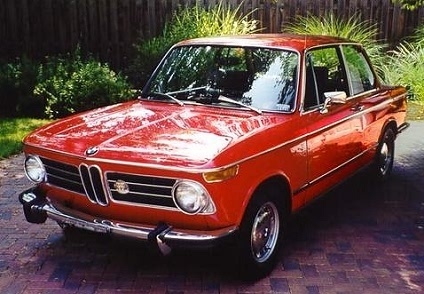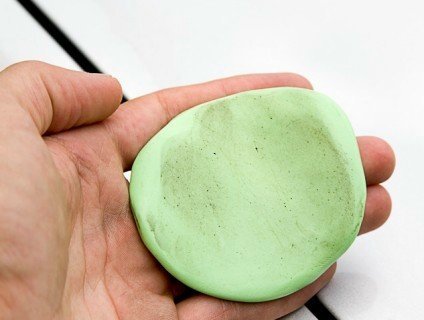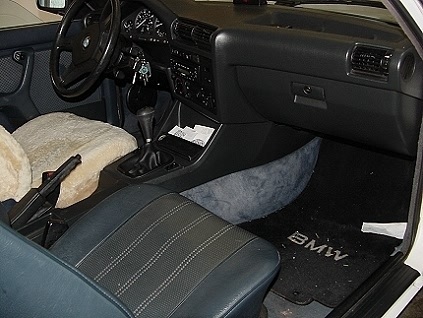 To most folks, car detailing is simply a good washing and wax job.
To most folks, car detailing is simply a good washing and wax job.
Others are satisfied with a full cleaning and perhaps protection service. Maybe the interior gets shampooed and the engine steam cleaned.
But to car enthusiasts, a freshly detailed vehicle is a work of art to be proudly displayed.
Whatever your detailing intentions, this page will introduce you to the basic process as well as common auto detailing terminology.

Start By Evaluating Your Car
An essential part of any new skill is knowing what to do first. Detailing your car is no different.
Yet, ask three professional detailers where to begin and you’ll likely get three different answers!
Take it from me…
The most important aspect of all is evaluating the work required.
What’s The Condition of Your Paint?
First thing’s first: Detailing requires a careful evaluation of the paint.
Take a minute to walk around your car. Do you see bug stains, water spots and tar spots, or is it completely free of contamination?
How does the paint feel to the hand?
Is it rough, does it have small surface bumps? Is it smooth like glass or silk?
You’re in luck if the surface is very smooth and free of contaminants. The only maintenance needed is regular washing (30 to 45 minutes a week).
On the other hand, stained or rough paint is not acceptable.
Depending in your situation, cleaning your paint can take 30 minutes or up to 3 hours — it really depends on the level of perfection you’re looking for.

Car enthusiasts often keep handy a quality detailer spray or, better yet, a claybar to remove surface contamination.
Use of a claybar is sort of like exfoliating skin or deep-cleaning pores.
It’s important because bonded contamination starts the oxidation process.
Closely Inspect For Imperfections
OK, so assuming your car’s paint is now clean…
Next you want to scrutinize it for any scratches, swirl marks and/or water spots. Such defects must be taken care of prior to waxing.
Thankfully these types of imperfections can usually be fixed with a good polish and some elbow grease (usually 1 to 2 hours).
I highly recommend using a good orbital polishing machine for faster and more consistent results.
Do not panic if your paint has deep surface scratches (meaning not scratched through to the primer or metal).
You may just need a scratch remover polish formula. Use Meguiar’s Mirror Glaze Ultra-Cut Compound for this job.
Most scuffs and scratches can be polished. They’ll no longer be visible (1 to 5 minutes per scuff or scratch).
You are ready for waxing only when your paint is contamination-free and polished to a high gloss.
Here’s a good route to get you on track for the future:
Deep-cleaning and polishing is best done twice a year. Wax, by contrast, should be applied 4+ times yearly.
Stick to the schedule!
With proper and timely care, your paint finish will remain in good condition for a long time to come.
Check Your Tires And Wheels
Neglected tires and wheels take a lot of care to bring back to life.
Expect trouble if your tires haven’t been regularly washed and treated with tire dressing.
Sadly, they will quickly turn brown and dull.
That’s why weekly washing and periodic waxing are key. Otherwise, wheels often become pitted and develop black stains from brake dust and road tar.
That’s a bummer!

Make no mistake:
Neglecting wheel maintenance results in permanent damage. You know that wheels are very expensive to repair or replace, especially with modern luxury or sports cars.
People often learn that the hard way!
What you want to do is closely evaluate your tires and wheels.
Are the tires brown and dull? Do the wheels have brake dust buildup?
If so, spend just 15 minutes or so on each wheel.
You need a brush, a quality tire and wheel cleaner and a bucket of soapy water.
It makes a huge difference!
Evaluation of Your Car’s Interior
Now, let’s turn to the inside.
Some people care more about their car’s interior than the exterior. This makes some sense, as that is where we spend our time.
In any case, the condition of the car’s interior greatly reflects how the car is being used.
It stands to reason that if you haul kids around, the inside of your car will have more dirt and stains than that of a businessperson. Likewise, a construction truck has a different set of cleaning needs.

So does it need heavy or light vacuuming? Is it dusty? Does the upholstery need cleaning? Is the leather dry?
Do you have stains or spills to clean? How does the interior smell?
Is it musty? Not Judging!
Regardless, a good interior detailing can take longer than an exterior detailing.
If you vacuum regularly (twice a month), it usually takes no more than 10 to 15 minutes. Done infrequently, it can take 30 minutes or more.
Set aside some time.
Spend just 3 to 5 minutes each time you wash the exterior. Keeping the dash and upholstery clean will be a cinch!
Needless to say, cleaning the dash and upholstery can be a 1 to 2 hour chore if you don’t stay on top of it.
My point is doing a little interior detailing maintenance every time you wash the car is a lot easier than trying to do a full interior detailing once or twice a year.
Want an alternative?
If you don’t detail your own car, consider having a full interior detailing once yearly.
A full interior detail includes vacuuming and shampooing the upholstery, carpet and floor mats, as well as cleaning the dash, console and vents. Don’t forget, after cleaning, leather and vinyl dressings and fabric protection should be applied.
But that’s not all!
To maintain a full detail, have the interior vacuumed each time your car is washed. Also, apply dressing to the dash, vinyl and leather each time the car is waxed (every 3 months).
This level of interior detailing will keep your car in good condition.
Take Matters Into Your Own Hands
Do yourself a favor and get the Air Force Blaster Sidekick by Metro Vaccum. No other tool works as well to keep your car’s interior clean and tidy.
Divide the work into manageable tasks. Don’t try to do it all in one day.
Keep after the interior a little bit at a time so you won’t be overwhelmed.
Pro Tip: Shampooing and interior fabric protection are best done in the spring or summer months because the nice weather helps to speed up the drying process!
How To Dress For Success

You’ve made it this far, so stay with me!
Another big part of the car detailing process includes applying dressing to those surfaces that can’t be waxed or otherwise protected.
Again, your car’s dashboard and other vinyl and leather surfaces need regular protection. Leather, vinyl and rubber dressings protect and beautify.
Dressing: Do Not Get Carried Away
For best results, dressings should be used sparingly and frequently.
People often go overboard applying protectants and dressings. Maybe they think that if a little dressing is good, a lot is even better.
It’s just not so!
The fact is porous surfaces, such as leather and rubber, can only absorb very small amounts of a dressing.
Typically the leather, vinyl, or rubber has absorbed as much as it can within 3 to 5 minutes of applying a dressing. The rest of the dressing is waste and should be buffed off.
If the excess isn’t buffed off, it can create a greasy mess that attracts dust and dirt.
The takeaway here is that, for the best results, dressings should be used moderately.
The Devil’s In The Details
The difference between a good-looking car and a great-looking car is in the small details. If using a professional detailer, make sure they’ll take care of the less obvious aspects before giving the okay.
Here is a 20-point detailing check list:
- Wash and dry exterior paint with car wash shampoo (soap) and a car wash mitt (20 min.)
- Scrub tires and wheels using a wheel cleaner and a car wash brush (20 min.)
- Clean and polish exterior windows and mirrors using a good glass cleaner (15 min.)
- Clean and polish paint using a clay bar followed by polish (60 to 90 min.)
- Wax paint using a liquid car wax or paste wax of your choice (45 min.)
- Polish chrome trim using a chrome and metal polish (15 min.)
- Clean door, hood and trunk jambs with a microfiber cleaning towel (10 min.)
- Clean and dress rubber seals using a rubber conditioner (10 min.)
- Treat tires and trim with a tire and trim dressing (15 min.)
- Vacuum (2 min.)
- Scrub or shampoo floor mats (15 min.)
- Shampoo carpet with a carpet and upholstery cleaner (45 min.)
- Clean fabric upholstery using a versatile carpet, leather and upholstery cleaner (45 min.)
- Clean the dashboard and console (20 min.)
- Clean vents using a vent duster (10 min.)
- Apply a specialized Water Repellent Leather Conditioner or vinyl protectant to the console, any vinyl and leather (20 min.)
- Clean interior windows and rear-view mirror with an ammonia-free glass cleaner (10 min.)
- Empty and clean ashtrays (5 min.)
- Deodorize vents and carpet (10 min.)
- Protect carpet and upholstery fabric (20 min.)
A complete car detail is no less than a full day’s job.
Most professional detailers charge a good sum to do this level of work. Expect to pay up if you have an expensive or neglected car!

Here are some more simple tips that will make detailing even easier for you…
Stay Out of The Sun’s Rays
If possible, work in a cool garage or in the shade. Most detailing products do not work as well on hot surfaces.
Seriously! Washing your car in the sun is a sure recipe for water spots and streaks.
Work From The Top Down
Your car is dirtiest on the bottom and cleanest at the top. Washing from the top down keeps your wash water clean longer and helps prevent swirl marks.
Similarly, dry your car from the top down leaving your bumpers, rocker panels, tires and wheels for last.
Roll Lint And Pet Hair Away
Invest in a masking tape lint roller designed to remove lint from clothing. These rollers are great for removing lint and pet hair from interior upholstery.
Lint rollers also work equally well on canvas soft tops.
Roll away for a beautiful, lint-free top!
Wait Awhile, Cool Your Jets!
Never wash your car fresh off the road.
The reason?
Cold water can damage hot parts including brake rotors, exhaust components and your engine. Let your ride cool down for at least 20 to 30 minutes before doing anything.
Sometimes your enthusiasm can work against you. Chill, literally!
When Less Is Actually More
Have you ever wondered why the instructions on most hair shampoo bottles read “Wash, rinse, repeat”?
It’s pretty simple; they want us to use more product.
Guess what! Most car care products are meant to be used sparingly and the instructions will say so.
Most of what gets applied ends up being wiped right back off again. Use less and save money. You’ll get the same results, maybe better.
Hey, is it Foggy in Here?
That nasty film on the inside of your windows is a polyvinyl fog created by new plastics and vinyl.
As your car ages, the polyvinyl fog diminishes. Reduce the amount created by using interior dressings and protectants sparingly, and wiping the dash and console dry.
On new cars, windows should be cracked as often as possible to allow the polyvinyl gases to escape.
Of course, the use of a sun shield also helps.
Be Careful Driving Topless
Sweat, oils from your skin, lotion and sunscreen may soil fabric upholstery as well as damage vinyl and leather upholstery.
Do you drive scantily dressed?
Cover your seat with a seat cover, towel or an old t-shirt.
In addition to upholstery damage from sweat, sunscreen and lotions, driving topless brings additional wear from ultraviolet (UV) rays.
I don’t need to tell you this can cause fading and rapid deterioration of the materials.
Details, Details And Details
You’ve just finished polishing and waxing your car. Maybe it glistens, but all of your hard work is overshadowed by white wax residue around the trim.
Has this happened to you?
This problem is easily solved while the wax is still fresh by using a few shots of detailing spray and a detailing brush or towel.
You Are Becoming a Fanatic
Fewer than 10% of car owners detail their own vehicles.
Chances are you’re reading this because you want to learn more about caring for your car yourself. That makes you a car enthusiast!
Most car nerds find cleaning and waxing rewarding, possibly even relaxing. It’s true!
Next steps: Learn about Detailing Supplies And Chemicals. The right products make detailing easier and go a long way towards keeping your car looking “just detailed” longer.
